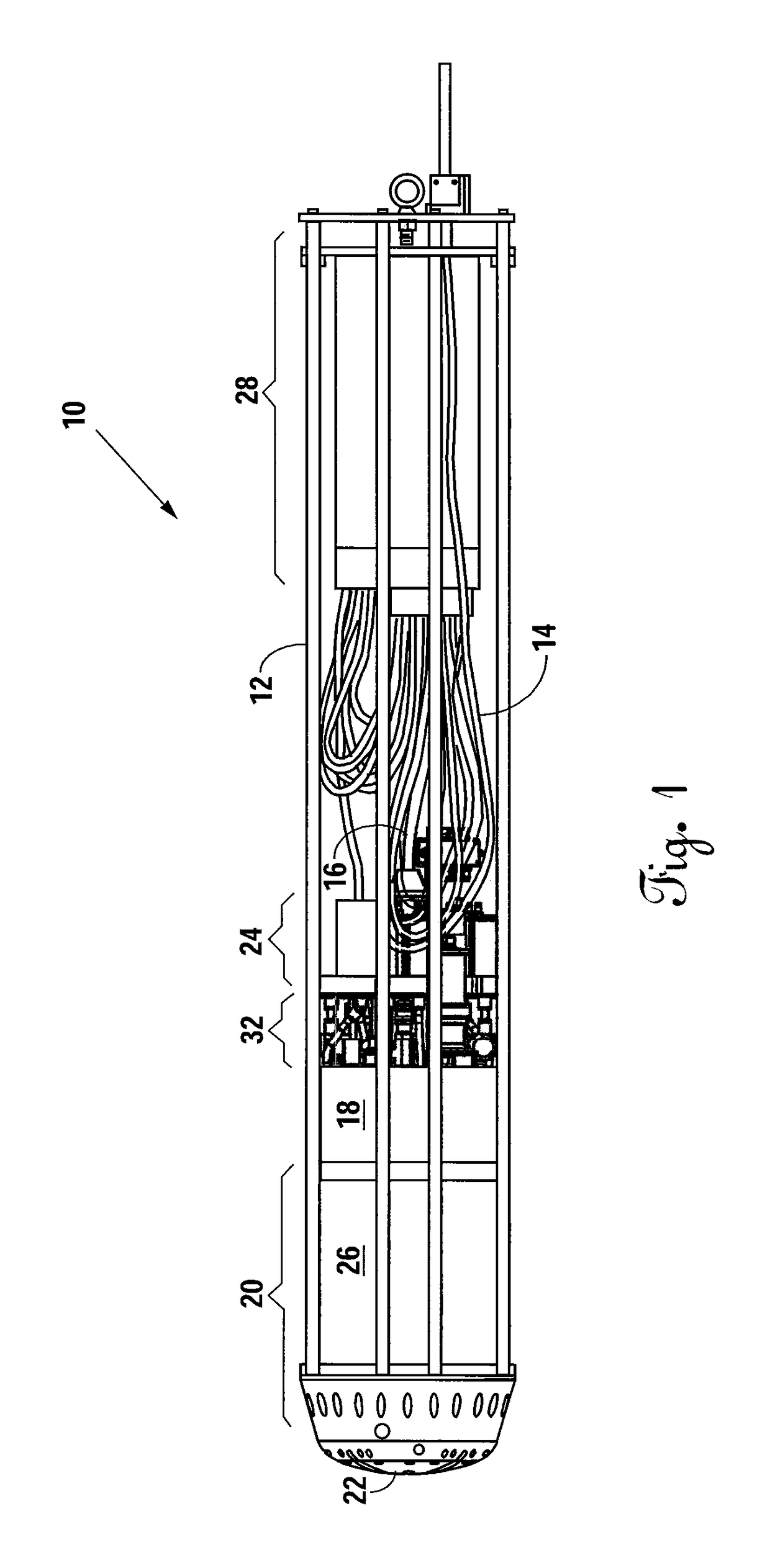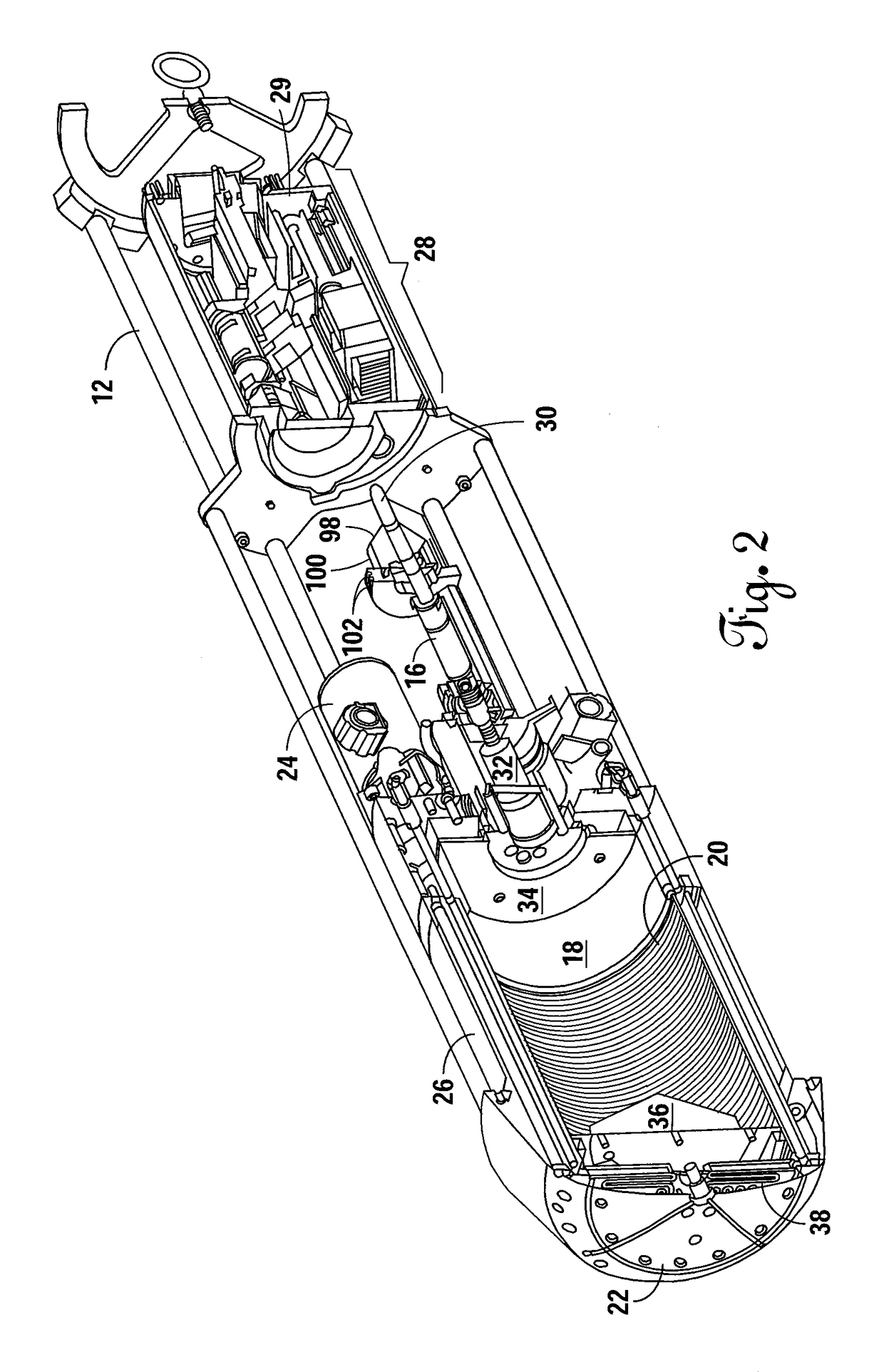Autonomous laser-powered vehicle
a laser-powered vehicle and autonomous technology, applied in the field of field-deployed autonomous cryobots, can solve the problems of inability to cast with the very complex internal channels that are required, the complexity of the necessary piping, and the inability to meet the requirements of large-scale billet sizes
- Summary
- Abstract
- Description
- Claims
- Application Information
AI Technical Summary
Benefits of technology
Problems solved by technology
Method used
Image
Examples
Embodiment Construction
[0030]FIG. 1 depicts the present invention, or vehicle 10, with the modular exterior shell panels removed. The vehicle exterior structure is comprised of a plurality of rods 12 and a plurality of modular exterior shell panels (not shown). The plurality of rods 12 serves as a skeleton or structural anchor for the plurality of panels. The panels can be removed for access to any portion of the vehicle 10. When the vehicle 10 is fully assembled, the plurality of panels provides a smooth exterior surface of the vehicle 10. A prototype vehicle 10 designed to function with a 5 kilowatt laser measures 25.4 cm in diameter×1.25 m in length. There is no “optimum” size for this vehicle. The 25.4 cm diameter provides a reasonable rate of descent through ice with the size of laser used. It is highly likely that a vehicle with a larger diameter in conjunction with much larger lasers can be used for a Europa full-mission simulation mission in Antarctica. For example, up to a 200 kilowatt laser may ...
PUM
 Login to View More
Login to View More Abstract
Description
Claims
Application Information
 Login to View More
Login to View More - R&D
- Intellectual Property
- Life Sciences
- Materials
- Tech Scout
- Unparalleled Data Quality
- Higher Quality Content
- 60% Fewer Hallucinations
Browse by: Latest US Patents, China's latest patents, Technical Efficacy Thesaurus, Application Domain, Technology Topic, Popular Technical Reports.
© 2025 PatSnap. All rights reserved.Legal|Privacy policy|Modern Slavery Act Transparency Statement|Sitemap|About US| Contact US: help@patsnap.com



